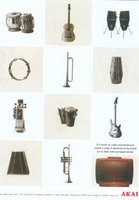Company : HUL
Brand Analysis Count : 297
 uraging and the brand was launched nationally in 2007.
uraging and the brand was launched nationally in 2007.The domestic water purifier appliances market is estimated to be Rs 450 crore ( HBL may 03/07) and is dominated by Aquaguard from Eureka Forbes. As discussed elsewhere in the blog, this category was not growing very fast because of the high cost of the product. The entry level water purifier was costing anywhere between Rs 5000- Rs10,000 .
Pureit is a battery operated purifier . The company uses the following differentiation points against the main competitor Aquaguard by claiming that the product works without gas/electricity thus the cost per litre of pure water is very less. More over the brand is priced at a tempting Rs 1600 which makes it the lowest priced purifier compared to Aquaguard or Kent.
Pureit is being positioned on the basis of its performance. The brand claims that the water from the purifier is ' as safe as the boiled water ' . By claiming that it purifies water as safe as boiling water, Pureit is trying to achieve Points of Parity with Aquaguard and Kent which also claims the same feature. Along with this POP, the brand tries to differentiate on the following points :
a. no electricity/gas
b. Cost per litre low
c. Price of the product is also low
Pureit is now being promoted through all media. There are ads in local print as well as TV. Being the FMCG major, HLL was able to place the product in most of the supermarkets and key consumer points. The brand uses the tagline " As Safe as Boiled water'. The brand is mainly targeting households (mothers ) which have small kids.
Apart these common above the line promotions, what has struck me was the below the line promotions that HUL has undertaken for Pureit. A visit to my doctor proved it. There was a product displayed prominently in his clinic with all necessary brochures and inquiry forms.The brand is using the influencing power of the medical fraternity to its advantage. For the doctor , it just means that his patient has access to pure water while waiting but for the brand this small gesture adds lot of authenticity. HUL has done pretty good homework on this product. The brand is available in shops and also sold through direct marketing associates.
Although the low price of this product will help it to penetrate many households , there are certain issues also.
Pureit is a consumer durable that requires after sales support. When even specialist consumer durable companies are blamed for offering poor after sales support, can an FMCG company deliver efficient customer service.
Another issue is the replacement battery. Will HUL be able to offer this spare without delay ?
At the consumer side, the problem is with the battery. It is crucial that the consumer replace the battery at the right time and use this product. A delay in the supply of battery can cause non-usage for Pureit at households thus causing bad word of mouth. May be it is because of this fear that HUL in its website tells the consumers to buy an additional spare battery.
The brand has more chance of longterm survival if it is promoted through the direct marketing venture ( Hindustan Lever Network) of HLL .
Pureit is a product that is a boon to Indian consumers. Its a boon because it has helped making a category more affordable. More than that, the quality of potable water in our country is deteriorating day by day creating health hazards especially for kids. By making a product at an affordable cost, HUL has made another positive impact in its consumer's quality of life.
































